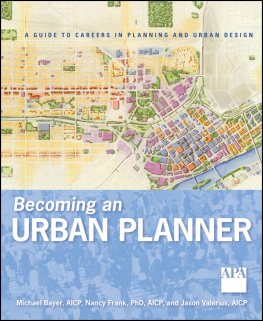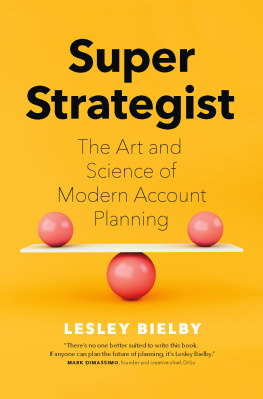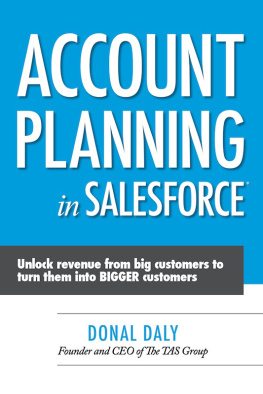BUSY BONNIE

Fresh out of college/grad school
Cooks 2-3 times per week
Heavy mobile user
Looks for fresh, on-the-go meals
Opportunity: highlight ready-made meals and increase usage of grocery store app
TRENDY TRICIA

Established professional
Likes to entertain guests at home
Active user of Pinterest for recipes
Early adopter of the latest food trends
Opportunity: increase shopping frequency by focusing on party platters, decorations, and catering
HEALTHY HEATHER

Stay-at-home mom
Shops 3+ times per week
Buys seasonal/organic produce
Often shops at farmers markets
Opportunity: introduce her to private label line of organic products to increase overall basket size
ANALOG ALICE

Retired/Empty nester
Middle income
Coupon clipper
Looks for the best deals in weekend circulars
Frequently pays with cash
Shops all parts of the store
Opportunity: encourage her to enroll in rewards program to provide more relevant deals via direct mail campaigns
***
As you may have noticed, these particular segments are pretty heavy on alliteration. Thats relatively common with segmentation studies, probably because it makes each segment easier to remember. That said, once you have a handful of segments, that doesnt mean your job as a Planner is actually done. To make these segments something Creatives can actually use, youre going to have to go one step further and bring these segments to life.
The Practical Pocket Guide to Account Planning is a work of nonfiction. Nonetheless, some names and personal characteristics of individuals or events have been changed in order to disguise identities. Any resulting resemblance to persons living or dead is entirely coincidental and unintentional. Endorsements and advice from industry professionals are the opinions of the cited commentators and do not necessarily reflect the opinions of their agencies.
Copyright 2013 by Chris Kocek
All rights reserved.
Published in the United States of America by Yellow Bird Press
ISBN: 978-0-9892849-2-9
Library of Congress Control Number: 2013937810
Awesome World of Advertising illustrations by Jean-Francois Dumais
All other illustrations by Lin Zagorski
Cover design by Rebecca Pollock
Book design by Lin Zagorski
www.practicalplanningbook.com
10 9 8 7 6 5 4 3 2 1
Without limiting the rights under copyright reserved above, no part of this publication may be reproduced, stored in or introduced into a retrieval system, or transmitted, in any form or by any means (electronic, mechanical, photocopying, recording or otherwise), without the prior written permission of the copyright owner above.
The scanning, uploading, and distribution of this book via the Internet or via any other means without the permission of the author is illegal and punishable by law. Please purchase only authorized electronic editions and do not participate in or encourage electronic piracy of copyrighted materials. Your support of the authors rights is appreciated.

Data Mining
As more and more devices and touchpoints go digital, theres an opportunity to find insights in the data footprints that customers leave behind during their decision making process. From mobile phones to desktop banners to search engine traffic , we live in an era of big data, with trillions of bytes streaming into servers every second. Thats why big brands and ad agencies are developing data analytics teams, to make sense of all that data and do something useful with it, for both the brand and the consumer.
Here are a couple of examples of how crunching the numbers and leveraging data have helped different businesses find previously hidden insights, which has, in turn, improved the customers experience.
EXAMPLE #1: TROUBLE IN THE ER
A few years ago, a hospital in Washington D.C. noticed that a large number of patients were returning to the ER within a few weeks of being discharged. To find answers, the hospital dug into the data, analyzing more than 300,000 ER visits, looking for patterns among 25,000 different variables, including the patients medications, vital signs and doctors. In the thicket of all that data, they discovered two key correlations. First, if the length of the patients original stay was more than 14 hours, the patient was likely to return. Second, if there was any mention of the word fluid on the patients medical chart, it significantly increased the likelihood of readmission. By analyzing hospital data like this, the hospital is now able to produce a more accurate readmissions forecast for each patient, which means better care for more patients, and hundreds of millions of dollars in savings.
EXAMPLE #2: THESE EARRINGS WOULD GO GREAT WITH THAT DRESS!
When Neiman Marcus wanted to take their renowned customer service to the next level, data mining helped by providing them with a powerful insight: customers who shop with the same associate three times spend almost ten times more than those who go to a random sales clerk. The result: the Neiman Marcus Service App, which allows customers to see which associates are on the floor as soon as they walk into the store. For Neiman Marcus Associates, the app gives them a fuller picture of each customers shopping history, both offline and online, so that the associate has a better understanding of the customers preferences and can offer relevant items that might complement previous purchases, such as a pair of earrings to go with a cocktail dress that was recently bought online.
EXAMPLE #3: EVERY VOTE COUNTS
Political campaigns have also turned to data mining to help get out the vote and increase donation levels. In a recent election in the U.S., campaign managers cobbled together voter profiles using information from Facebook, Twitter, and other publicly available sources, which allowed them to offer hyper-focused messaging on specific issues. With their custom built algorithms and data analytics teams, they were able to learn that certain voters only opened campaign e-mails about veterans issues and never opened e-mails about jobs. That insight led the campaign team to send more e-mails about veterans issues to those specific constituents throughout the campaign, increasing open rates and greater participation at the polls.
The bottom line: insights that come from data mining can impact the business well beyond marketing. As a Planner, you probably wont be sifting through the data on a daily basis, but you will have to ask for certain kinds of data, so its important that you build a good relationship with the Clients who own the data in the first place. When it comes to selling the strategy, it helps if you can back up your insights with data points from the Clients own databases. And finally, when Creatives ask you questions like, How do people use their mobile devices at point of purchase for a particular product? youll become indispensable to them if you have that data in your back pocket.
Next page











